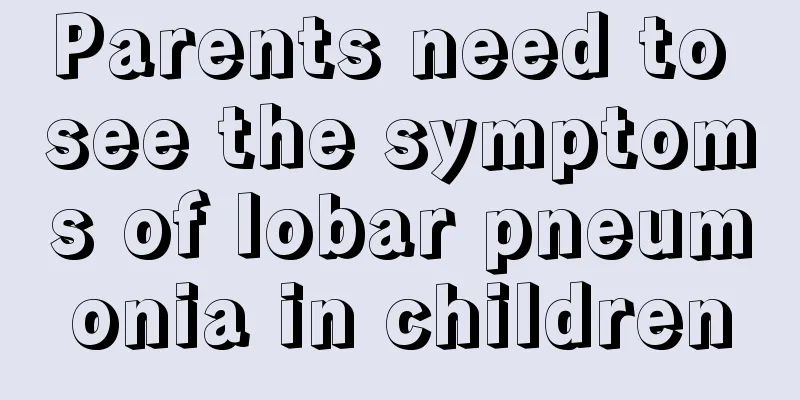Parents need to see the symptoms of lobar pneumonia in children

|
If a child suffers from lobar pneumonia, there will be many obvious symptoms, such as coughing, high fever, chest pain, and some patients will have symptoms such as nausea, vomiting, abdominal distension and diarrhea. The following will introduce more manifestations of this disease. 1. The disease occurs suddenly with chills, high fever, chest pain, cough, and iron-colored sputum. Extensive lesions may be accompanied by shortness of breath and cyanosis. 2. Some cases may also experience nausea, vomiting, abdominal distension and diarrhea. 3. Severe cases may have neuropsychiatric symptoms, such as irritability, delirium, etc. Failure may also occur, complicated by infectious shock, which is called shock-type (or toxic) pneumonia. 4. Acute illness, rapid breathing, and flaring of nostrils. Some patients have herpes on the lips and around the nose. 5. During the congestive phase, pulmonary signs include weakened local respiratory activity, slightly enhanced voice tremor, dullness on percussion, and audible and crepitus sounds. There may be typical signs in the consolidation stage, such as weakened respiratory movement in the affected area, increased voice resonance and vocal fremitus, dull or solid percussion sounds, and pathological bronchial breath sounds during auscultation; in the dissipation stage, percussion gradually becomes clear sounds, and bronchial breathing sounds gradually weaken and are replaced by moist rales. 6. Lobar pneumonia is alveolitis within one lobe or one segment of the lung caused by infection with Streptococcus pneumoniae. In recent years, due to the use of large amounts of powerful antibiotics, typical lobar pneumonia has become less common. The disease usually occurs when the climate changes suddenly and the body's resistance decreases. It is more common in winter and spring, mainly in children over 3 years old. At this time, the body's immune function, that is, the defense ability, gradually matures, which can limit the lesions to one lung lobe or one lung segment and prevent them from spreading. Generally, lobar pneumonia has an acute onset, manifested by sudden high fever, chest pain, loss of appetite, fatigue, and irritability. A small number of children may have abdominal pain, which is sometimes misdiagnosed as appendicitis. Severely ill children may experience symptoms of toxic encephalopathy, convulsions, delirium and coma, or even septic shock. |
<<: What should I do if my baby’s hair is hot? Parents need to understand this knowledge
>>: Symptoms of interstitial pneumonia in children, parents need to know in detail!
Recommend
Why does my baby have diarrhea after eating taro?
Taro is cheap in the market and has high nutritio...
The reason why newborns have a lot of mucus
Generally speaking, newborns have more nasal secr...
In children under 2 years of age, the intramuscular injection site is
For children under 2 years old who need an intram...
What medicine should children take for dry cough without phlegm? Let the experts tell you!
Children often cough, which makes parents very di...
What is the method of spinal massage treatment for children?
Everyone has a spine that supports the bones of t...
Things to note when red spots appear on your baby's face
Babies are the apple of their mother’s eye. Mothe...
What’s wrong with my daughter’s many bumps on her body?
If a girl has a lot of lumps on her body, this pr...
Why is the five-month-old baby restless?
The body of a five-month-old baby has begun to de...
Emergency measures for children with high fever and cramps
Parents who pay special attention to changes in t...
What to do if your child eats a coin
Many children may swallow foreign objects directl...
Should I take care of my newborn baby's hiccups while sleeping?
It is very common for newborns to hiccup while sl...
Why are children's lips red?
Generally speaking, normal people's lips are ...
Is it cerebral palsy if the baby keeps kicking his legs?
For newborn babies or infants, they are the lifeb...
What is neonatal hypoxic ischemic encephalopathy
What is neonatal hypoxic ischemic encephalopathy?...
The harm of smog to babies should not be ignored
As air pollution continues to worsen, smog appear...









